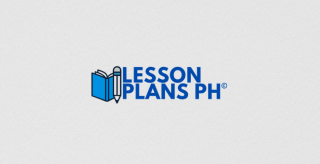DAILY LESSON LOG in MIL 12 (Quarter 1)
I. Objectives:
LC: Describe how communication is influenced by media and information MIL11/12IMILIIIa-1
At the end of the lesson, the learners should be able to:
- Define media, information, and technology literacy.
Identify the similarities and differences among media, information, and technology literacy.
II. Content: Introduction to Media and Information Literacy: Media Literacy, Information Literacy & Technology Literacy
III. Learning Resources:
- Teacher’s Guide pages
- Learner’s Materials pages
- Textbook pages
- Additional Materials from Learning Resource (LR) portal
- Lee, Alice and So, Clement (2013). “Media Literacy and Information Literacy: Similarities and Differences.”
- https://www.igi-global.com/dictionary/teacher-preparation-programs-and-learner-centered-technology-integrated-instruction/29528
- Handouts, Rubrics, Reference book, Video clips, CG, Metastrips, Manila Paper, Marker Pens, Colored Papers, Scissors, Glue, Masking Tape, Interactive Slides
IV. Procedures:
A. Reviewing previous lesson or presenting the new lesson:
- Motivational Activity: “Mind Mapping Literacy”
Students will be asked to recall what they know about the term “literacy.”
They will create a quick mind map using key terms like reading, writing, social media, TV, Google, etc.
Teacher: “Today, we will explore three important literacies — Media, Information, and Technology Literacy — and how these play a role in your daily life and future career.”
B. Establishing a purpose for the lesson:
- "Today, we will explore the three main types of literacy in our digital age—media, information, and technology literacy—and understand how they influence our daily life as students and citizens."
C. Presenting illustrative examples/instances of the lesson:
- Activity: PowerPoint Presentation + Venn Diagram
Teacher defines each literacy and presents examples:
Media Literacy: Identifying fake news online
Information Literacy: Researching for a paper
Technology Literacy: Using Excel or Canva
A Venn Diagram is shown to highlight overlaps and distinctions.
D. Discussing new concepts and practicing new skills #1:
- Activity: Group Work – Video Clip Analysis
Students are grouped into four.
They watch another short video demonstrating the application of MIL in real-life situations.
Task: On meta strips, groups answer:
What literacies were present in the video?
How do they compare or differ?
After 5 minutes, each group presents their output using manila paper.
E. Discussing new concepts and new skills #2:
- Activity: “Pass the Mic”
Each student receives a printed definition of a literacy.
They take turns reading and explaining what the definition means to them.
Teacher asks:
"Which definition best fits our context in the Philippines?"
"Can media, information, and technology literacy be misused?"
"How can you become responsible users of information?"
F. Developing mastery (guides formative assessment):
- Activity: “MIL Poster Reflection” (Individual Task)
Students receive ¼ bond paper.
They draw a symbol representing one of the literacies and write one meaningful line about what it means to them.
Name should be neatly printed.
Posters are posted in class for appreciation and discussion.
G. Making generalizations and abstractions about the lesson:
- “What are the similarities and differences between media, information, and technology literacy?”
“Why is it important to be literate in all three?”
H. Finding practical applications of concepts and skills in daily living:
- “How can media literacy help you when reading political news on social media?”
“In your family, how does technology literacy affect communication and tasks like budgeting or planning?”
I. Evaluation of Learning:
- Identification:
Which literacy focuses on analyzing media messages? → Media Literacy
Which is closest to library science and research? → Information Literacy
Which enhances digital productivity? → Technology Literacy
Who stated that information literacy involves analyzing information? → Lau (2013)
Alternative Assessment:
Short essay: "Why is MIL important in your strand or future profession?"
J. Additional activities for application or remediation:
- Ask a family member what they understand by “media” or “technology” literacy. Share tomorrow.
(alert-passed) The lesson plan can be adjusted based on the grade level and the available resources. The teacher may also use different strategies to achieve the objectives.

.png)
